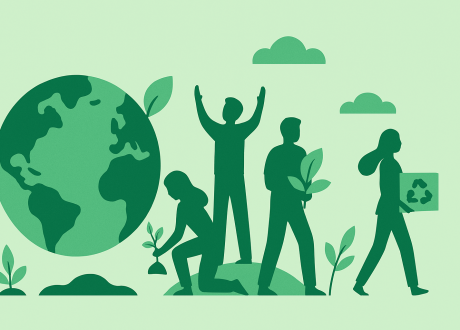
5 Steps to Build an Effective CSR Strategy
In today’s business landscape, Corporate Social Responsibility (CSR) has evolved from being a “nice-to-have” to ...

Brineworks, Captura, Sea02 and Ebb remove dissolved CO2 from seawater for carbon storage or reuse, according to the World Economic Forum (WEF).
Brineworks, the Amsterdam-based start-up uses electrolysis – which splits water molecules into oxygen and hydrogen – as the starting point for extracting CO2 from seawater. It says its method will cost less than $100 per ton of CO2 when operating at scale – less than half of the typical cost of a method named Direct Air Capture (DAC), which draws CO2 directly out of the atmosphere.
The technology operates on renewable energies such as solar and wind, making it a clean energy process that could virtually be conducted anywhere. The method returns only water, no chemicals, to the sea afterwards, the company states.
Another advantage of Brineworks’ technology is that it produces hydrogen as a by-product. This could become a future revenue stream as demand for “green”, carbon-free hydrogen increases in the wake of heavy industries such as steel and cement-making decarbonizing.
TechCrunch reports that the start-up has recently secured $2.2 million in funding to develop its method.
Captura – a spin-off from the California Institute of Technology (Caltech)– employs electrodialysis to extract CO2 from seawater. Electrodialysis works by acidifying ocean water to release CO2 dissolved in the seawater and then capturing it with a membrane.
Captura’s technology also uses renewable energy to fuel its process, without any additives or by-products. The company aims to reuse existing infrastructure such as desalination plants or decommissioned oil rigs.
Captura has gained support from the US Department of Energy and industry players like Norway’s Equinor. The two companies are currently working together on a pilot project in Hawaii that will remove 1,000 tons of CO2 annually.
Sea02 – a member of the World Economic Forum’s Uplink initiative – , Sea02 also draws on electrodialysis to separate CO2 from the seawater it is dissolved in. Once captured, CO2 is either sequestered or made available for onward use. The decarbonized water is returned to the ocean, where it can start absorbing CO2 from the atmosphere again.
SeaO2 is currently seeking storage providers in Europe as partners to secure sequestration capacity. A spin-out of Delft University, the company’s goal is to remove 250 tons of carbon this year, increasing its output to one million tons – or a gigaton – by 2045.
Ebb Carbon focuses on organizations that process water, including aquaculture farms, desalination plants, coastal industry plants and ocean research labs. As seawater flows through these facilities, Ebb’s technology separates it into acidic and alkaline solutions using low-carbon electricity.
The alkaline solution is then returned to the ocean, where it binds CO2 to form bicarbonate, which the company describes as a stable form of CO2 storage for 10,000 years. The Ebb process also helps to lower ocean acidity, which affects marine species such as fish and shellfish.
اترك تعليقا